Botox: Your FAQs & Everything To Know Before & After
Botox: Your FAQs & Everything To Know Before & After
Think of Botox as lifting weights, but for your face – it teaches your muscles how to behave and slows down the skin aging process. Botox is an injectable muscle relaxer that uses botulinum toxin type A (specifically OnabotulinumtoxinA) to temporarily paralyze the facial muscles. This cosmetic treatment offers a safe and effective first line of defense to smooth out wrinkles or relieve migraine tension. It is a minimally-invasive treatment and offers near immediate results to reduce the appearance of fine lines and wrinkles on the forehead and around the eyes, along with other areas of the face or body. While a 2016 study confirmed that Botox is a safe and effective treatment, candidates for Botox should ensure it’s the best treatment option for their needs. Always do your research on the best plastic surgeons in your area. Educate yourself on what to expect during the procedure, the best prep and after-care practices and products and instructions on the do’s and don’ts for before and after Botox treatments.
Expert Tip: Ask your provider to use a topical anaesthetic if the potential pain is stopping you from trying out Botox. Many injectables contain a small amount of lidocaine. However, using a numbing cream – like Zensa Numbing Cream, which contains 5% lidocaine the active ingredient, – can help you experience little to no pain during the procedure.
Read on for answers to all your Botox FAQs, what to expect during a Botox appointment, the best products to use and do's & don’ts on how to care for your skin before and after Botox sessions.
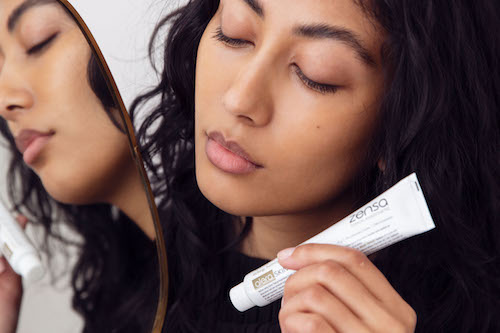
What Exactly Does Botox Do?
Botox works by blocking nerve signals and relaxing muscles in the injected area, so they cannot contract. This process weakens the muscles, which helps soften facial wrinkles (on the forehead, crow’s feet, hooded droopy eyelids), eases tension that causes headaches or jaw pain (TMJ), excessive armpit sweating, eye, shoulder or neck spasms and overactive bladder. While Botox works to smoothen creases throughout your complexion, these injections do not tighten the skin. So, Botox is not a suitable cosmetic treatment option for smile lines, a double chin, saggy skin or any other type of gravity-induced wrinkles.
What Are The Benefits of Botox?
- Improves Facial Wrinkles, Crow’s Feet and Fine Lines
- Potentially Delays Skin Aging
- Relieves Migraines, Tension Headaches & Jaw (TMJ) Pain
- Controls Muscle Spasms In The Neck, Shoulder & Eyes
- Reduces Excessive Sweating
- Aids Bladder Control
- Relieves Allergy Symptoms (Itching, Sneezing, Nasal Drainage & Blockage)
How Long Does Botox Take To Work?
The time it takes for your Botox injections to take effect depends on the dosage used and the area treated. You can start to see a difference within 3-4 days, but it could take up to 10-14 days to see the full results. You will likely see results from Botox more quickly with treatment for crow’s feet and finer forehead lines, where there’s a thinner skin texture than with deep forehead lines and the skin in between the brows (aka eleven lines). If you’re getting Botox for TMJ, expect mild improvement after a couple of days, but the true relief should come within 7-10 days after your treatment. When using Botox for tension headaches, expect relief within 3-4 days. A (different) 2016 study found that Botox injections reduced the frequency of migraines after 4 weeks.
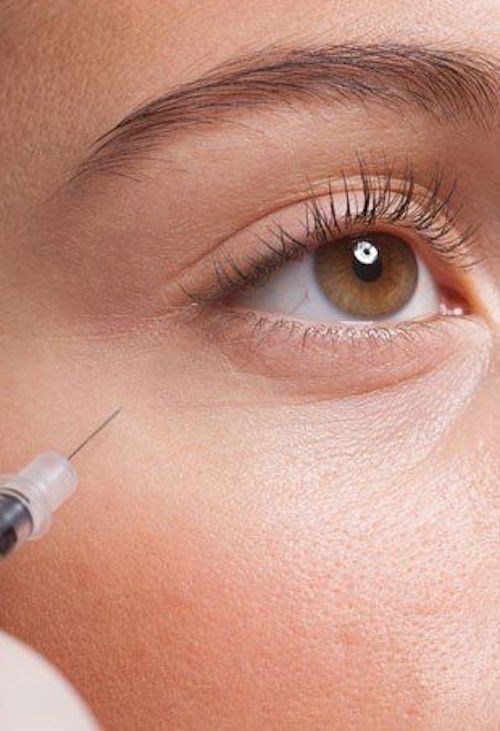
Credit: The Fashion Spot/Pinterest
How Long Do Results From Botox Injections Last?
Most Botox injections last for around 3 months. It’s recommended to schedule appointments for Botox injections between 4-6 months apart. The longevity of a Botox treatment’s effectiveness is determined by the dosage amount used and injection frequency. The more units injected and the longer you use Botox, the longer the Botox lasts between appointments.
Lighter doses (fewer units), which offer a more “natural” look, might only last for 6-8 weeks. Heavier doses (more units) could last for up to 6 months before needing another round of Botox injections. The longer you regularly get Botox injections, the more you train your facial muscles to not tense up and form strong wrinkle-forming expressions. With regular and prolonged use, Botox causes the targeted muscles to atrophy. As these facial muscles (or other muscle groups) weaken, you will likely need to use fewer units of Botox (and less frequently) over time to maintain your smoothen skin and wrinkle-free results. Proper after-care is also important to make your Botox injections last longer (scroll down to read more about this topic).
What Is Botox Made Of?
Botox is made from a toxin produced by the bacterium Clostridium botulinum (otherwise called botulinum toxin type A). Plastic surgeons and other certified medical professionals use a purified form of this substance, which is considered safe for medical usage. Aside from Botox, other popular injectables made from botulinum toxin type A include Dysport®, Xeomin® and Jeuveau®.
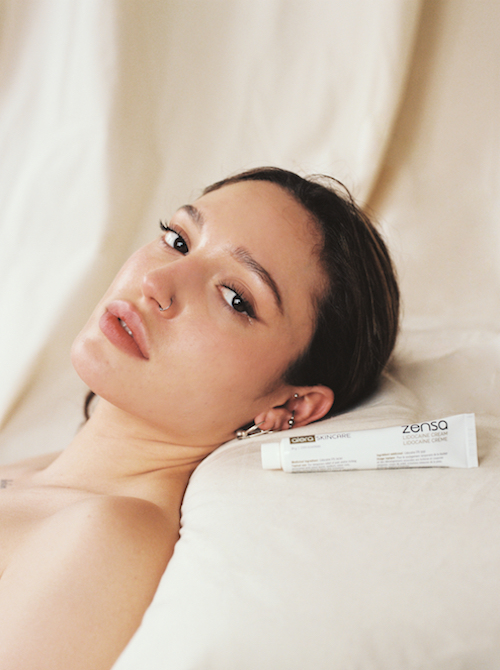
Are Botox Injections Safe?
While unregulated botulinum toxin type A is lethal, the small dosages used for Botox treatments are clinically proven to be completely safe when professionally administered. A 2020 study reconfirmed the safety and efficacy of Botox injections. The FDA first approved botox in 1989 to treat two rare eye disorders (blepharospasm and strabismus) in adults. It was later approved in 2002 to be used for cosmetic purposes as a treatment for moderate to severe frown lines, facial wrinkles, and crow’s feet in adults. As of July 2020, Botox is FDA-approved as a safe treatment for 11 therapeutic conditions. Health Canada approved Botox for therapeutic use as a safe treatment for chronic migraines in 2011 and is approved for cosmetic purposes throughout Canada when performed by a certified doctor. If injected incorrectly, Botox treatments could potentially cause permanent nerve damage among other side effects.
Who Can Administer Botox Injections?
In the U.S.A. & Canada:
Certified medical professionals and clinicians with proper training are legally permitted to administer Botox injections. This list of licensed medical professionals includes:
- Physician
- Physician Assistant
- Dentist
- Licensed Surgeons, such as Plastic Surgeons
- Nurse Practitioners
- Registered Nurses and Certain Other Types of Nurses
Clinicians who are not permitted to administer Botox injections, even with the presence of a licensed physician or medical professional and professional training, include:
- Medical Assistants
- Clinical Assistants
- Estheticians
- Physical Therapists
- Paramedics
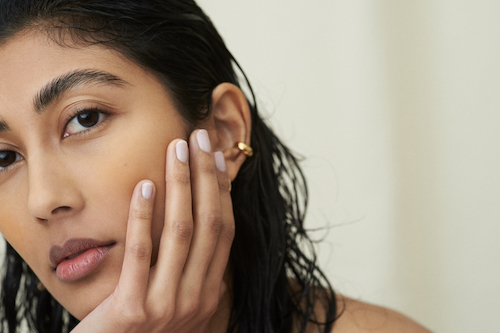
Will Botox Get Rid of Wrinkles?
The short answer is no. Botox does not remove wrinkles – it limits their visibility. Because Botox paralyzes specific muscles that prevent dynamic wrinkles (the creases made in our skin when we make certain facial expressions or movements, such as smiling, squinting our eyes or raising our brows). Dynamic wrinkles are not permanent or prominent when our face is at rest. Botox cannot get rid of static wrinkles (deep creases in our skin or lines that remain visible when our face is at rest), but these injectables can soften their appearance (especially with frequent treatments and prolonged use). Static wrinkles typically form as we age and naturally lose skin elasticity, which makes these deep creases more likely to develop – even when these muscles are at rest.
Can Botox Prevent Wrinkles?
Preventative Botox – aka ‘baby Botox’ has become popular in recent years for a reason. As discussed, one of the main benefits of Botox is its ability to weaken certain facial muscles. After regular, consistent use, Botox causes these muscles to atrophy, which limits your facial movements and the ability for dynamic wrinkles to imprint deeper, permanent creases (static wrinkles) into your skin. If you start getting Botox before you see any permanent lines or creases develop, you can train your muscles to stop moving in a way that would cause static wrinkles to form before your skin begins losing its elasticity as you age.
However, experts are divided on whether they support preventative Botox and at what age to start regular treatments to actually prevent wrinkles (and not accidentally speed up skin aging in the process). The timeline that determines when someone should begin getting regular Botox injections has less to do with age and more to do with the state of an individual’s complexion.
If you have a highly expressive face, a thinner skin texture or a close family member with several deep wrinkles, you might want to start your Botox regimen on the earlier side. However, with extremely rare exceptions, there’s no need to consider Botox for cosmetic purposes under age 25. Youthful complexions can afford to move – you don’t want a distorted face. Wait until your skin’s elasticity is no longer on your side.
Whether you’re beginning treatments for corrective or preventative purposes, Botox has been proven to improve skin elasticity. A 2015 study found that Botox injections improved skin elasticity by 30% for up to 4 months. So, regardless of when you decide to start getting Botox injections, they still can offer some wrinkle-prevention and anti-aging benefits.
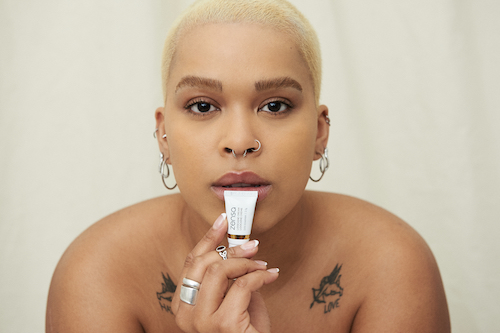
What Is The Difference: Dysport vs Botox?
Dysport and Botox both contain botulinum toxin type A as their active ingredient and are used to smoothen wrinkles. However, Dysport is more diluted than Botox (about a 3:1 concentration) and spreads faster over a larger surface area. Botox is better suited to treat small areas like crow’s feet, in-between the brows and the corners of the lips due to its slow-moving, high-concentration formulation. Dysport works well for larger areas like the forehead or frown (eleven) lines, where the few injections used will spread more quickly and evenly.
Because Dysport is less concentrated than Botox, you will likely need more units of Dysport than Botox to complete your treatment. Dysport costs less per unit than Botox, so this difference evens out and your treatments should be similar in price – no matter which option you decide is best for you.
Are Botox and Fillers The Same?
Botox and dermal fillers are both cosmetic injectables that can help smooth out wrinkles and provide you with a more youthful complexion. However, their similarities stop there. While Botox works by paralyzing the muscle, dermal fillers are designed to add fullness to various parts of the face. Common fillers contain substances like hyaluronic acid, polylactic acid and calcium hydroxylapatite to fill in static and deep wrinkles or depressed scars, plump the lips, enhance sunked-in parts of the face, remove shadows under the eyes and contour the jawline.
Unlike Botox, dermal fillers are designed to fill in deep lines or static wrinkles by stimulating collagen production to plump the skin. Fillers are never used for dynamic wrinkles. Most dermal fillers last for between 6 months to 3 years – unlike Botox, which needs a touch-up every 4-6 months.
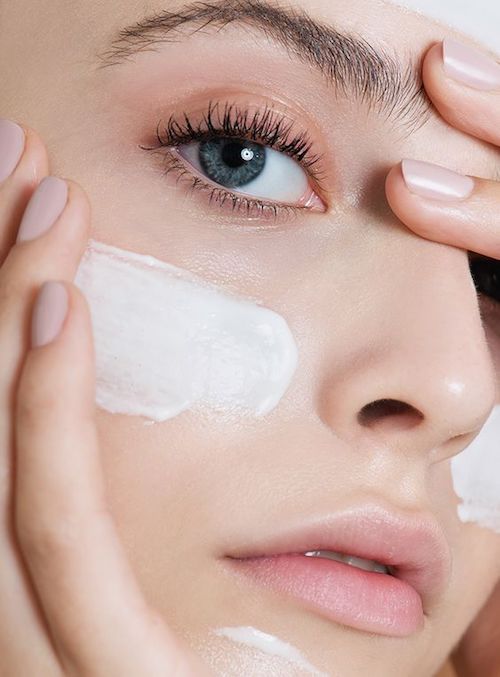
Credit: Beauty Within/Pinterest
Do Botox Injections Hurt?
As with any procedure involving a needle, it’s normal to expect (and worry about) whether Botox injections will hurt. Fortunately, Botox injections only take a few minutes to perform, so any pain will be short-lived. It is common to feel a stinging sensation when Botox is injected into the skin and is often not too painful. However, you can always ask your doctor to apply a topical anaesthetic – like Zensa Numbing Cream – before the procedure for a virtually pain-free Botox session. Apply Zensa Numbing Cream for approximately 10 minutes before injecting the area. Show up to your appointment at least 30 minutes early to ensure there’s enough time for the topical anaesthetic’s numbing qualities to take effect.
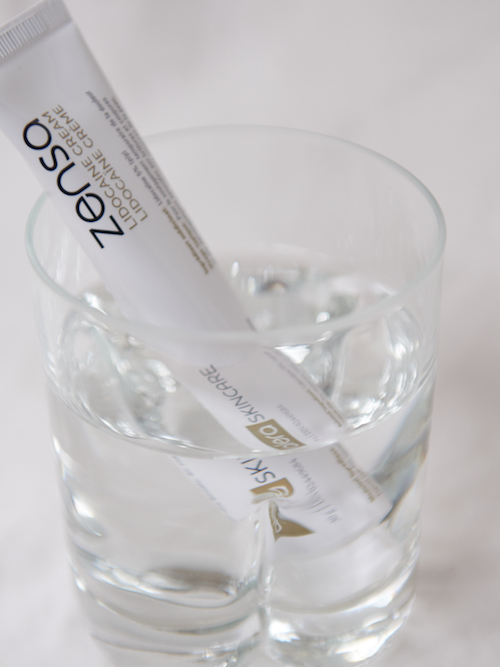
How Much Do Botox Injections Cost?
Botox injections are priced either by unit or area treated. The average cost of a single unit of Botox varies from $10 to $25 (the latter in larger cities). Most individuals need 20-30 units for a forehead treatment, another 20-30 units for their frown lines (glabella or ’eleven’ lines that can form in the area between your eyes) and about 10-15 units for crow’s feet.
If you’re paying per area, the average Botox injection costs are:
- Forehead: $250-$600 per treatment
- Glabella Lines: $250-$600 per treatment
- Crow’s Feet: $150-400 per treatment
Who Isn’t Eligible For Botox?
Individuals with very thick skin texture, existing muscle weakness (including neuromuscular disorders like ALS) or highly sensitive skin might not be eligible candidates for Botox. The Botox injections could not settle properly and can cause allergic reactions. Botox is made with the protein found in milk (albumin), so anyone with this allergy should avoid Botox injections. If you’re lactose intolerant, you should not have an adverse reaction after Botox injections – this condition is not the same as an albumin allergy. If you have any allergy-related concerns, speak with your doctor to see whether Botox is a suitable treatment option for you.
Women who are pregnant or breastfeeding should never get Botox injections. Individuals who are prone to seizures, have bleeding problems, heart disease, diabetes, glaucoma, recently had eye surgery or have an active respiratory infection are not eligible candidates for Botox.
Cosmetic & Therapeutic Uses For Botox
Cosmetic Uses For Botox:
- Smoothens Facial Wrinkles, Crow’s Feet and Fine Lines
- Lifts Droopy Eyes
- Reduces Appearance of Neck Bands
- Sharpens & Defines Jawline
- Lifts Corners Of The Mouth / Lip Flip (Enhances Upper Lip)
- Prevents & Delays Skin Aging
Therapeutic Uses For Botox:
- Chronic Migraines
- TMJ Disorders (not FDA or Health Canada-approved)
- Overactive Bladder
- Severe Underarm Sweating
- Cervical Dystonia (Involuntary Muscle Spasms In The Neck)
- Spasticity (Muscle Stiffness or Tightness from Prolonged Contraction)
Botox Side Effects
The side effects of Botox you experience depend on the area treated. Some common side effects are normal. When getting facial Botox injections, common side effects include:
- Redness
- Mild Swelling
- Pain at The Injection Site
These side effects should resolve on their own within a few minutes or hours after receiving Botox injections. Bruising following a Botox appointment is a rare occurrence. While a relatively mild side effect, bruising after Botox can last for a few days or up to two weeks.
Other normal side effects from Botox include:
- Mild Headache
- Fatigue (Don’t Lie Down Within 4 Hours of Treatment)
- Mild Soreness (Sore Throat, Muscle Aches)
- Dry Eyes or Mouth
- Mildly Swollen or Drooping Eyelids
- Cough
- Nausea
- UTI
While some normal side effects are unpleasant, they generally should not be a cause for concern. If you feel worried about your reaction to your Botox injections, contact your doctor immediately. However, if when you experience any side effects that fall out of this normal range, you must seek medical attention immediately.
Serious Side Effects from Botox Injections:
- Allergic Reactions (Itching, Swelling, Rash, Severe Dizziness, Trouble Breathing)
- General Dizziness
- Difficulty Swallowing
- Flu-Like Symptoms
- Heavily Swollen or Drooping Eyelids

Credit: Ad Retouch Studio/Pinterest
How To Prep For Botox Injections
Proper preparation before your Botox is important to prevent bleeding, bruising, infection and other uncomfortable side effects. You also want to clear and ease your mind ahead of your Botox appointment, so you can show up to your session relaxed and ready to resolve any pain or enjoy more youthful skin. Here are some dos and don’ts to help you prep for your Botox injections:
What To Do Before Botox:
- Read Up on Botox
- Research Doctors: Take Recommendations & Read Reviews Before Booking A Session
- Take Inventory of Your Medications (Consult With Your Doctor)
- Go For A Walk, Run or Workout & Meditate (Clear Your Mind)
- Eat Fresh Pineapple or Take Bromelain Supplements (3-7 Days Before To Prevent Bruising)
- Drink Plenty of Water
- Use Arnica Cream & Apply Ice (Prevents Bruising)
- Shower & Wash Your Face Thoroughly (As Close To Your Appointment As Possible)
- Discuss Using A Numbing Cream (Prepare To Show Up Early)
What Not To Before Botox:
- Don’t Drink Alcohol (For At Least 24 Hours Before Botox)
- Avoid Taking Blood-Thinning Medications For 7-10 Days (Aspirin, Ibuprofen, Fish Oil, etc.)
- Cut Caffeine For 24 Hours
- Ditch The Garlic & Salt From Your Diet
- Avoid Smoking Cigarettes (Prevents Bruising)
What To Expect At A Botox Appointment
Make sure you’ve already spoken with your doctor about any medications you’re taking and whether you plan on using a numbing cream for the procedure. Your Botox appointment should begin with a short consultation to discuss where and why you want to get Botox along with any concerns you have about the injectables. This consultation could take place ahead of time or right before the procedure begins. Before photos can be taken, so you can easily see the results.
The doctor should disinfect areas and wash your face quickly with a wipe. Apply the numbing cream, if desired, and wait 10 minutes for it to take effect. If you opt not to use a topical anaesthetic, your provider may apply ice to numb the area.
Botox injections take around 10 minutes to perform. Remember to relax. Some discomfort is normal. However, alert your doctor immediately if you feel any severe pain or symptoms of an allergic reaction. Expect some mild redness and swelling. These immediate side effects should subside within a few minutes. Don’t touch the injection site for at least an hour after the procedure.

Botox After-Care Instructions
While there’s no recovery time, it’s important to implement Botox after-care practices into your routine to prevent any bruising or chances of ruining the final results. Take it easy, Remember to relax – especially if you’re experiencing a headache or Botox fatigue.
What To Do After Botox Injections:
- Rest & Recover (Make Sure To Sit Up)
- Resume Your Everyday Activities But Take It Easy For The Day If Needed
- Do Facial Exercises (Smile, Frown, Lift Your Brows – Repeatedly)
- Stay Hydrated & Drink Plenty of Water
- Remain Consistent With Your Skincare Routine (Gentle Products, No Exfoliants)
- Sleep On Your Back The First Night
What Not To Do After Botox Injections:
- Don’t Lie Down For At Least Four Hours After Botox
- Refrain From Touching Your Face For 1-3 Days
- Avoid Hot Baths or Showers For 24 Hours
- Don’t Wear Makeup For At Least 24 Hours (Go A Few Days If You Can)
- Avoid Alcohol For At Least 24-48 Hours After Your Appointment
- Don’t Work Out For A Few Days (Doctors Recommend Anywhere from 24 Hours to 5 Days)
- Stay Out Of The Sun For At Least 4 Hours (Try To Avoid Sun Exposure For 24-48 Hours)
- Avoid Other Skin Treatments (No Facials, Face Massages, Exfoliating or Fillers)
